I’m watching every penny these days so I wanted to know how it would be to make a wardrobe from one pattern such as Butterick 5333.
Can a wardrobe be made from 10 yards of fabric, one pattern and cost less than $100 including buttons, interfacing and linings? I think the answer is Yes.
Another, more personal, question I wanted to answer: Could I be happy with just one pattern? Naw, not me. I frankly don’t see an end to my pattern addiction. But that is, as they say, a personal problem 🙂
However, given my self-imposed parameters, it was fun to work out all the kinks and have the results work so well with the rest of my wardrobe. This is functional sewing with rich results if you can make the alterations your shape requires to achieve a well fitted garment. The more I worked with the pattern and became familiar with the Butterick sloper the better I liked my results. Had I not known how to alter, I would have been quite disappointed with the results and might have given up on economy sewing, or sewing, all together.
To begin at the beginning: Butterick 5333 Lifestyle Wardrobe

Unlined jacket has princess seams and three-quarter length sleeves with cuffs.
Top and above mid-knee length dress have self-lined upper and midriff front and back.
Straight skirt, above mid-knee length, has waistband, darted front and back, back zipper.
Pants have front pleats, back darts, mock fly zipper, side seam pockets and waistband.
My results without making a muslin first. Yes, I am hiding my face…you don’t want to know, and no, I wasn’t in a fight, LOL!

(I added the buttons on the sleeve cuff as my only embellishment)
The photos have been greatly enhanced so you can see details and wrinkles of the dark navy jacket, pants and skirt. All these pieces are made from 5 yards of the darkest navy silk/lycra summer weight suiting. It was part of a $8.50 per yard bundle from Micheal’s Fabrics.
The fabric has a formal, vintage feel. There are jacquard stripes running in varying widths down the length of the fabric but it doesn’t really “read” as a pin stripe since it is so dark in color. While the lycra gives it some body it also wrinkles easily. I’ve never worked with a fabric quite like this one.
I made up the pants first with major alterations to the crotch curve and back leg width. Here’s the finished hip information and having made the pants I can say that the hip measurements do include the pleat width.

These finished garment measurements are posted at each major figure measurement circle with a cross. Very helpful! You can compare it to the measurements for each size to determine the ease. However, that is not the total solution it seems to be as my measurements most closely match size 20 but that proved to be too big even figuring in the ease.
I made the navy jacket in size 20 with no alterations. It is easy to see (as I saw after I’d finished) that this fabric really needed to be underlined and lined so it would have enough body to support all the extra ease. I think it is too big but the dark color and shoulder pads allow me to get away the fuller fit. The sleeves, however, are a mess! As I worked through construction and fitting I had to continue to down size until the white jacket, my last piece, is a 16 through the bodice, flaring out to an 18+ at the hemline.
The skirt also had to be altered to fit but I like the pattern because from the front view it is a narrow skirt but has enough flare in the back that a kick pleat is not needed. It was underlined with organza. It is what I would call a “traditional suit skirt” with plenty of ease for sitting.
I then did the dress pattern, the tropical print in silk faille and the aqua one in linen. I ended the tour with another version of the jacket in a white cotton canvas, shown here with a dress from last summer. I didn’t fancy the empire style for a top so I didn’t sew up that option.
The finished measurements information turned out to be the best gauge of how the garment would fit when completed.
Things to think about and alter for if you are going to make up this wardrobe:
the sloper used
1. has a well developed derriere with much of the hip width low and to the back of the body.
2. the skirt and dress length is very short
3. the sleeves of the jacket are very long
4. 4″ ease has been added to the finished jacket width
5. the width of the pant leg falls from the thigh, slightly narrowing to the hemline
6. the front pleats on the pants may need to be moved to produce a front pleat that continues on down with the pressed crease to the hem.
7. Major shaping on the sleeve pattern may be needed to produce a well fitted sleeve
I chose to have the pleats open to the side seam. The instructions tell you to choose which way they open.

Pattern alterations made for sleeve of white jacket.

The most economically satisfying part of this exercise? The navy pieces fill a big gap in my wardrobe. The value of having basic pieces in your wardrobe is difficult to monetize.

You can see larger pictures of each piece in the Butterick 5333 set at Flikr.
Your can also see larger pictures of each ensemble in the Mix N Match set at Flikr.






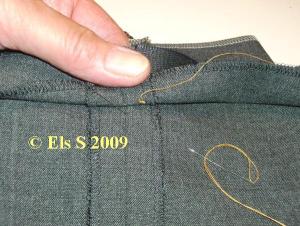
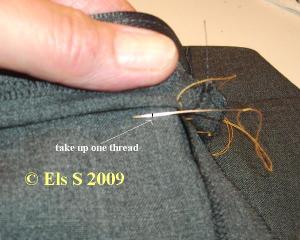

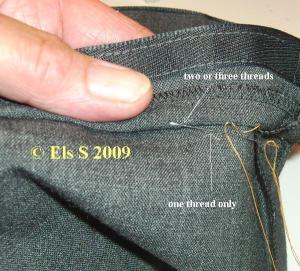




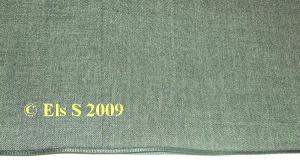
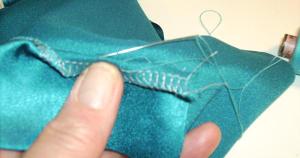
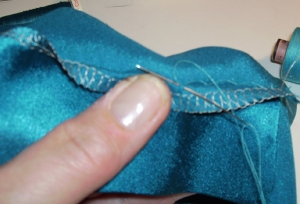
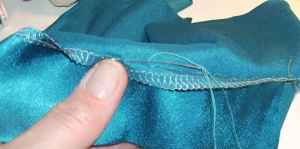

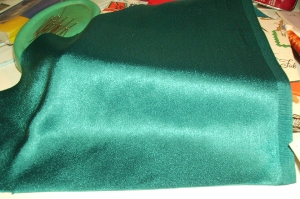
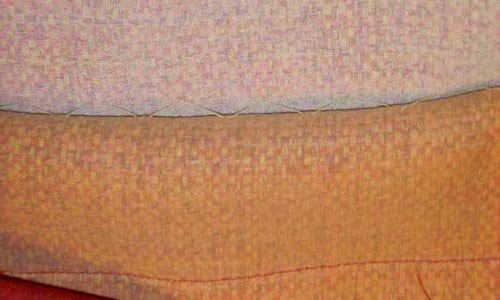









 Subscribe with Bloglines
Subscribe with Bloglines